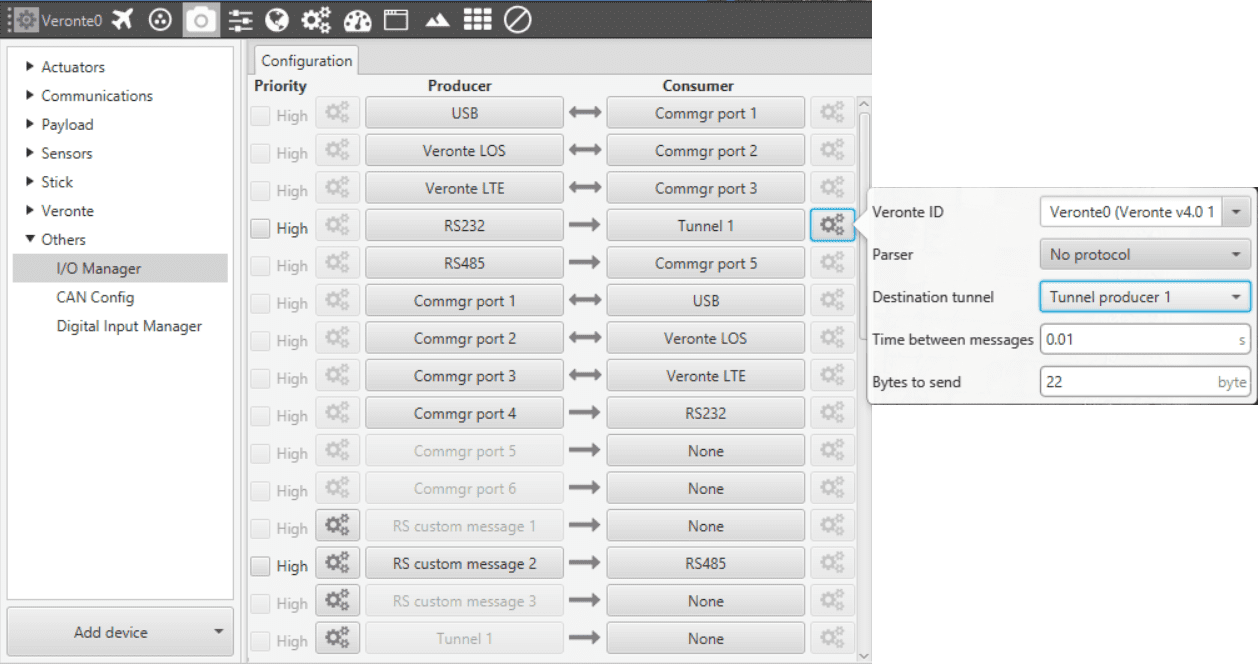Tunnel¶
It is possible to configure a Tunnel which is a bidirectional bridge between Veronte Units that communicate to each other sharing information about an external device connected to the Serial or Digital port.
Imagine that we would like to have a button connected to the air autopilot to launch a parachute. It is not possible to physically connect the button because the air autopilot is in the flying platform, so we need a different option. Here is where the tunnel becomes useful. We could connect the button throught the Serial or Digital port to the Ground Autopilot, and then with the tunnel send the signal to the air one. With this configuration it would be like if the button were physically connected to the aircraft.
Let’s consider the following image.

XPC Uint8 Configuration Menu
In the image above there is a device connected to the SCID Connector 232 (Producer) and there is a Tunnel (Consumer) which sends that information to other Veronte with a determined ID. On the other hand, Veronte Air has to be configured to receive the signal sent by other device. In that case the Producer will be Tunnel and Consumer will be the port or destination tunnel where the device is connected.
The option available when configuring Tunnel as Consumer are:
Veronte ID: identifies the Autopilot which will receive the information.
Parser: chooses protocol to parse message data.
Destination tunnel: number of port is used to avoid mistakes and identify a Tunnel when using more than one.
Time between messages.
Bytes to send: sets the message size to send.
When configuring the unit that receives the information, only is necessary to configure the “Consumer” of that a information, generally a serial port.
